The B2C QUICK WIN Playbook
A playbook for ongoing marketing programs from early-stage to mature. Double MQL’s (B2B**) or revenue (B2C) within 60 days. It takes a top-down, systematic approach to triage & fix common marketing weaknesses: measurement, programmatic signals, audiences, and spend balancing.
Micro-conversions triggering GTM tags. Goals configured. Audiences populating. Retargeting pixels set. TOFU/MOFU/BOFU flows tracking smoothly. Content and lead magnets delivering to the right people at the right time. Let’s get started.
15-Second Synopsis
Steps 1-3 get the lay of the land. Plan on 1 week for this. Key outcomes:
- How solid or porous is campaign tracking? i.e. How much can you trust it?
- Do Sales & Finance have key insights & info?
- 80/20 rule. Identify the top 10 campaigns for hyper attention. Bunch the rest into important, neutral, and noise categories.
Steps 4-6 drive quick, significant revenue gains of 75-150% in weeks 2 thru 8. In weeks 2-4 adjust anything clearly amiss. After that give the system ~2 weeks between major changes (for AW to gather data & learn & optimize itself ). In all, you should be able to do 3 rounds of optimizations. By round three then most gains (low-med hanging fruit) have been achieved.
Step 7, classical marketing, is the long-term play. Bank the step 1-6 wins and switch gears to begin a formal, systematic data dive. Key outcomes involve validating or rethinking the 4P marketing mix, positioning, target markets, etc.
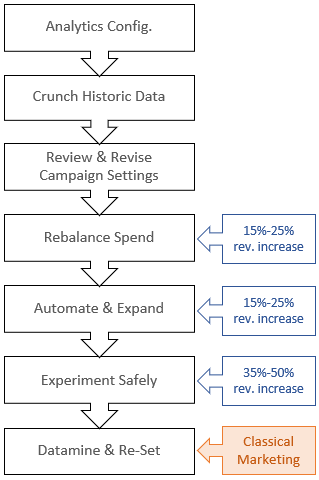
3 Minute Synopsis
- Assess Funnel Integrity: The overarching question… how good is your data and does it connect end to end (impression à Revenue)? Good or bad, you’ll use what you have initially but you need to know how accurate or flaky the data you are using to make decisions is. Long term plug the funnel/data leakage but short term properly understand the warts and flaws of what you have. Sub questions to ask are:
-
- Can spend by program be reasonably tracked to closed sale?
- Can you calculate CAC/LTV by campaign with confidence?


2) Qualitative feedback from Sales, Product, Finance teams: What’s the opinion of these key stakeholders? Is the alignment/disconnect a political or communication gap or do the conversations reveal misalignment in the ad spend strategy? Listen keenly but don’t commit. This is a qualitative fishing expedition to inform the next step (quantitative campaign review).
3) Review & Codify campaigns: Quantitatively review all campaigns considering stakeholder feedback. What campaigns generate the most sales and highest ROAS? Which ones are noise? Are brand Vs non-brand, display Vs search, etc. clear and evident in naming conventions? Ultimately you are looking to flag the top 10 campaigns in each key category. Those top 10, based on my experience, drive 90% of your positive results. They should get 80-90% of your focus in the next step.
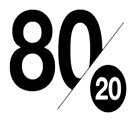
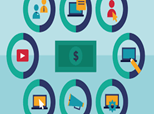
4) Rebalance/Shift Spend: Shift spend from low to high ROAS until ROAS of all campaigns matches. Micromanage your top 10 performers and batch process the rest. If campaigns are muddled, then separate the winning portions out (Example: Consider an English Global campaign. Consider splitting countries into campaigns based on factors like similar CTR & ROAS. A handful of countries are driving the bulk of sales). Expect a 15%-25% revenue increase.
5) Enable All Platforms, Integrate, And Automate Flows: Expect another 15%-25% revenue increase.
-
- Pick low hanging fruit first: Every platform (AdWords, Bing, FB, LinkedIn, Instagram) has easy to pick fruit and it has hard to reach fruit. A common mistake is believing you need to get all fruit from a tree before moving on to the next tree. Better to stay focused on the big 1-2 platforms make sure you scoop the easy-to-pick fruit from all trees before breaking out the ladder.
- Integrate/Cross-pollinate audiences: LinkedIn has strong profiles, Google has huge reach, and FB has people relaxed and spending time online. Use audience pools cross platform to leverage the strength of each.
- Look-A-Likes & Similar-to: Use lists of your best customers to cast your net wide for top prospects using AdWords Look-A-Like and FB’s Similar-to.
- Automation flows: Every contact is an opportunity. Automate marketing to guide prospects through their journey. Assess the value of each contact at each step with automation so you know where to guide them and when to let them go. Remember that everyone should get some level of follow up after initial contact but we don’t want to waste money spamming (or get creepy).
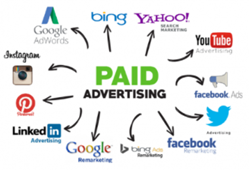
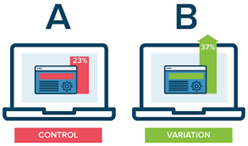
6) Experimenting Safely: Align ads with product/market position & test variants. Launch 10 variants. Track closely and shut down the worst three ASAP and shift spend to the top 3. Run for more data and keep switching the lowest performers for new test variants. Expect another 35%-50% revenue increase.
7) Data Mine Customer Data for New Pockets of Growth: This is the long-term play. Once you have the short term wins of optimizing existing programs then start looking at new opportunities. Your CRM data is gold for this.
You'll want to switch gears from daily execution and tweaks of programs into a systematic review of all customer & marketing assumptions the company has been operating with. A non-comprehensive list includes: Customer Journey Mapping, Ideal Customer Profiles, re-evaluate market/product position, Unique Selling Proposition clarification, and refined target segmentation.
And make sure funnel tracking is 100% leak-free. For, in the words of Peter Drucker “If you can’t measure it, you can’t improve it.”

** MQL & SQL are used as B2B lead metrics as SQL>>Win sales cycles vary greatly by company but are rarely <60 days.
